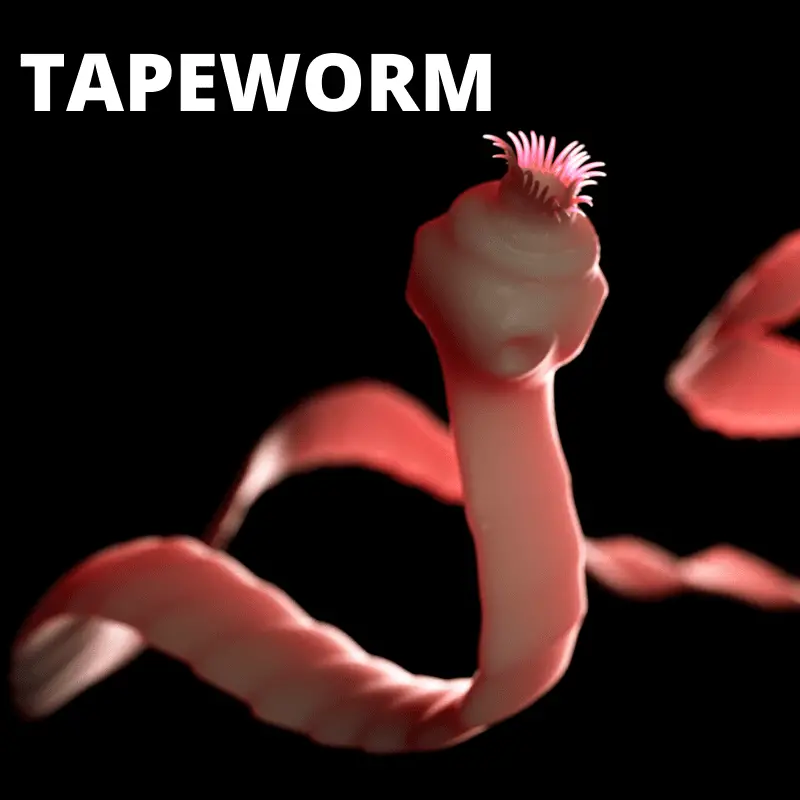Every dog owner is aware of the antics their dog shows from time to time. Among them is chasing their tails. It’s one of the most classic antiques of dogs. Sometimes the chase lasts only for a couple of seconds, and other times your dog keeps on whirling around like a tornado in pursuit of its tail.
Dogs chase their tails from boredom to head injury. There are many reasons why your dog keeps on chasing its tail. While quick chases are regular, if your dog keeps on whirling around, you may need to consult your vet for a health check-up. However, the main reason and the most common is that they are just having fun!
For the owners who wonder why their dogs chase their tails, I have eight reasons below why I believe they do this. Let’s delve into the details to understand this quirky habit of your pet dog.
1. Playing (Fun)
Just like their human companions, dogs also get bored pretty quickly. It happens especially if you frequently keep on leaving your dog behind for an extended period. During this time, your dog tries to find out more about themselves by discovering their anatomy. That is why the tail-chasing incident mostly appears when the dogs are still very young.
Puppies are more playful and curious compared to mature dogs. So, when they discover their tail, most probably, they consider it a fun toy that they can access all the time. That is why you can see puppies chasing their tails constantly.
Even though you can see the adult dogs chasing their tails, they usually go for a quick twirl just for fun’s sake. However, as they become adults, they often grow out of this behaviour.
Below is a video of a dog having fun with its tail. You can tell that the type of behaviour is playful by the dog’s expression of happiness at the end.
2. Boredom
More often than not, dogs chase their tail just because they are incredibly bored. The reason for this boredom can be loneliness or the lack of physical exertion. Chasing their tail offers excitement and entertainment to the dogs for at least a little while when they feel lonely. Not only that, the physical stimulation that chasing offers them can expel some of the built-up energy when they do not get enough exercise.
Thankfully, if the tail-chasing behaviour crops up due to boredom, you can fix it quickly. You have to increase your dog’s regular activity by adding more walks to their daily routine and creating some mental and physical games for them.
All dogs love to play a game of fetch or mental puzzles. So, if you do not have enough time to walk your dog multiple times a day, you should think of finding other ways to keep him engaged mentally and physically.
3. Parasites
Fleas and ticks are yet another reason why your dog keeps on chasing its tail. If your dog gets infected, its tail can become extremely itchy. In that case, your dog may try to chase its tail to relieve the itching and bite the tail constantly.
If you think fleas and ticks cause this behaviour, you should check the skin of your dog thoroughly. If you notice dark and specks in their coat, understand that your dog is suffering from infestations. Sometimes, you may find some balding or red patches too on their skin. It happens when your dog scratches or licks its skin excessively. If you have any confusion about it, you should consult with your vet to ensure that your dog is suffering from fleas and ticks infestations and treat it accordingly.
Other intestinal parasites like tapeworm can also cause this behaviour. Besides that, food allergies or pollen allergies can cause discomfort in the tail region to chase their tails.

4. Attention Seeking Behavior
The tail chasing behaviour of your dog may be a sign of attention-seeking behaviour. In some cases, experts have found that dogs start to chase their tails when they think they are not getting enough attention from their human companions.
Your dog loves you and will try to pull out all the antiques to get a reaction from you. To them, anything is good as long as you give them the attention they need, good or bad.
That is why every dog parent needs to set aside time for their pets. You should understand that dogs are sociable animals and love to interact with their human companions.
5. Medical Condition
Chasing their tail once in a while is a completely normal behaviour of dogs. However, if you notice that your dog is forming a habit of chasing its tail, you need to find out whether there are any serious underlying issues.
Veterinarians point out that obsessive chasing can occur if your dog is suffering from specific brain abnormalities. Other serious medical reasons can be an infection or even cancer. Sometimes dogs tend to chase their tail to relieve the pain in the area where their tail has been docked. Experts can also consider that this behaviour is a clear sign of mental illness among dogs. They believe obsessive tail chasing is the manifestation of canine compulsive disorder. If the dog does not get medical attention at the right time, this behaviour can lead to significant self-damage. So, if you suspect that your dog is chasing its tail obsessively, you should consult your vet promptly.
6. Genetics
Some studies suggest a strong connection between tail-chasing behaviour and your dog’s level of cholesterol and blood pressure. Scientists found that the dogs that chase their tails compulsively are suffering from high cholesterol.
Compared to normal dogs, high and low lipoprotein cholesterol density was higher among dogs chasing their tails. Even though this field requires further studies to reach any conclusion, these studies show curious findings nonetheless, and it’s worth mentioning to your vet for a check.
You have to keep in mind that there are several reasons why your dog keeps on chasing its tail. If you are giving your dog plenty of exercise and attention but still notice this behaviour constantly, you should keep a strict watch on your dog’s behaviour.
7. Age Factor
Dogs tend to chew their tails on both ends of their lives. Young puppies tend to chew their tails as they slowly become aware of their body. The puppies often consider their tail as a toy and not parts of their body. Youthful chasing of the tail is a passing affair that does not require any medical intervention.
When their mental acuity diminishes, most of the dogs showcase repetitive behaviours, like tail chewing. However, when dogs become old, they chew their tails due to decreased body awareness. In this case, chewing indicates a cognitive functional issue that requires proper medical attention and treatment.
8. Stress Reliever
Tail chasing can also be one of the symptoms of excessive stress. Repetitive chasing of the tail can often become a source of comfort to the dogs, significantly if such behaviour has helped them relieve their stress and anxiety before. You may not realise it, but some small factors can be the root cause of severe anxiety in your dog.
Aggressive behaviour of another pet towards them, continuously living in a small area like a crate, lacking socialising opportunities, and previous frightening experiences can lead to such behaviour. Other than that, emotional or physical abuse in the home can also lead to this behaviour.
So, if you notice your dog exhibiting such behaviour, you should consult a vet first. The vet is the best person to suggest what you should do to help your dog after they have seen it all before.
When Should You Be Concerned
If your dog injures itself by biting its tail or continuously chasing it, get in touch with your veterinarian. The vet can check your dog and determine if any underlying physical or emotional condition is causing this behaviour. They will also help you to create a plan and maintain it properly to address these behavioural problems.
Final Words
The main reason is certainly for fun. However, chasing their tails be a threat to the well-being of your dog. That’s why you must monitor your dog’s behaviour. If you think that your dog is chasing its tail as prey, you need to take action to stop them. The best way is to discourage them from this behaviour when you feel they are close to chasing their tail. It will help you to eliminate your dog from hurting themselves.
